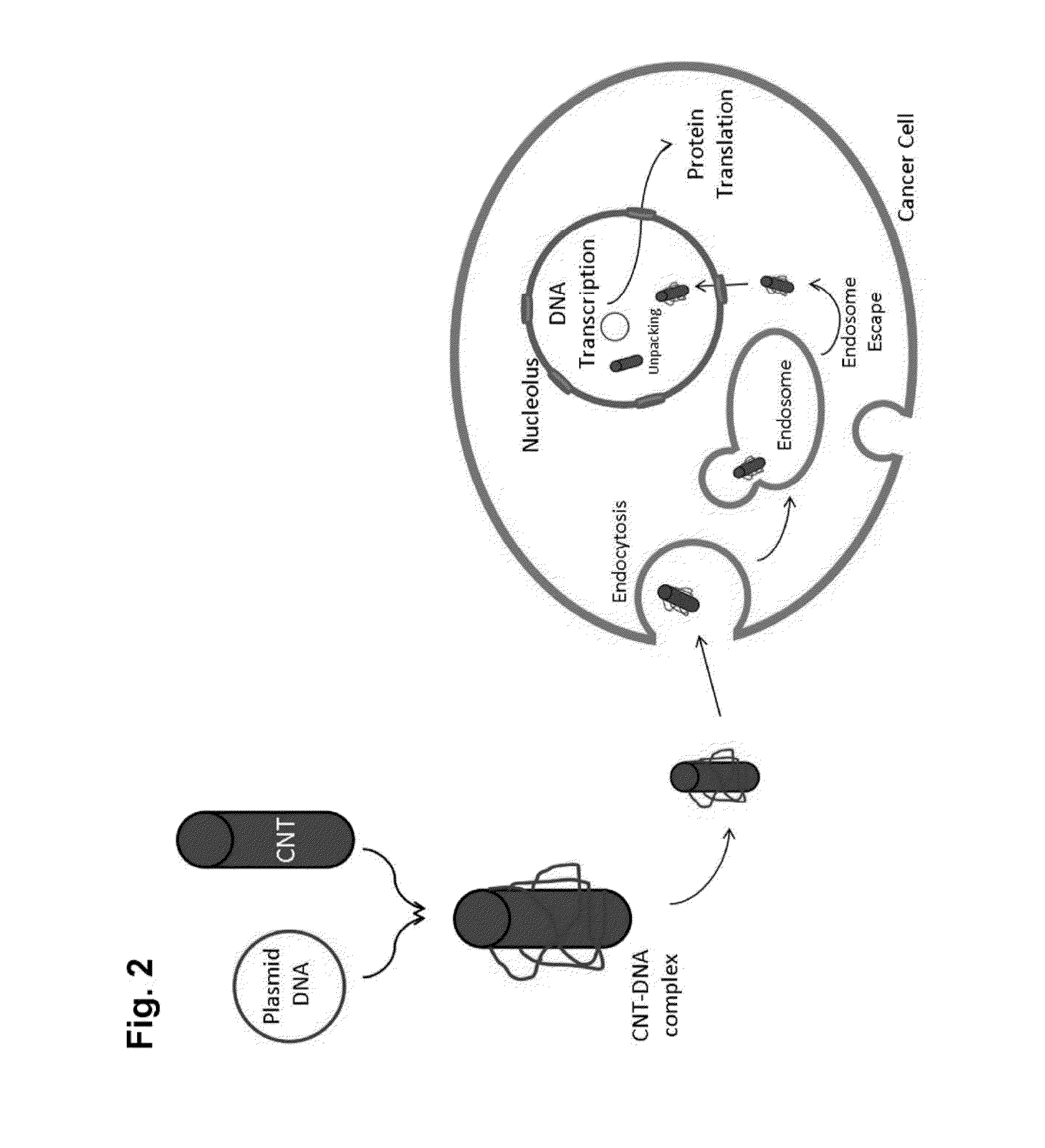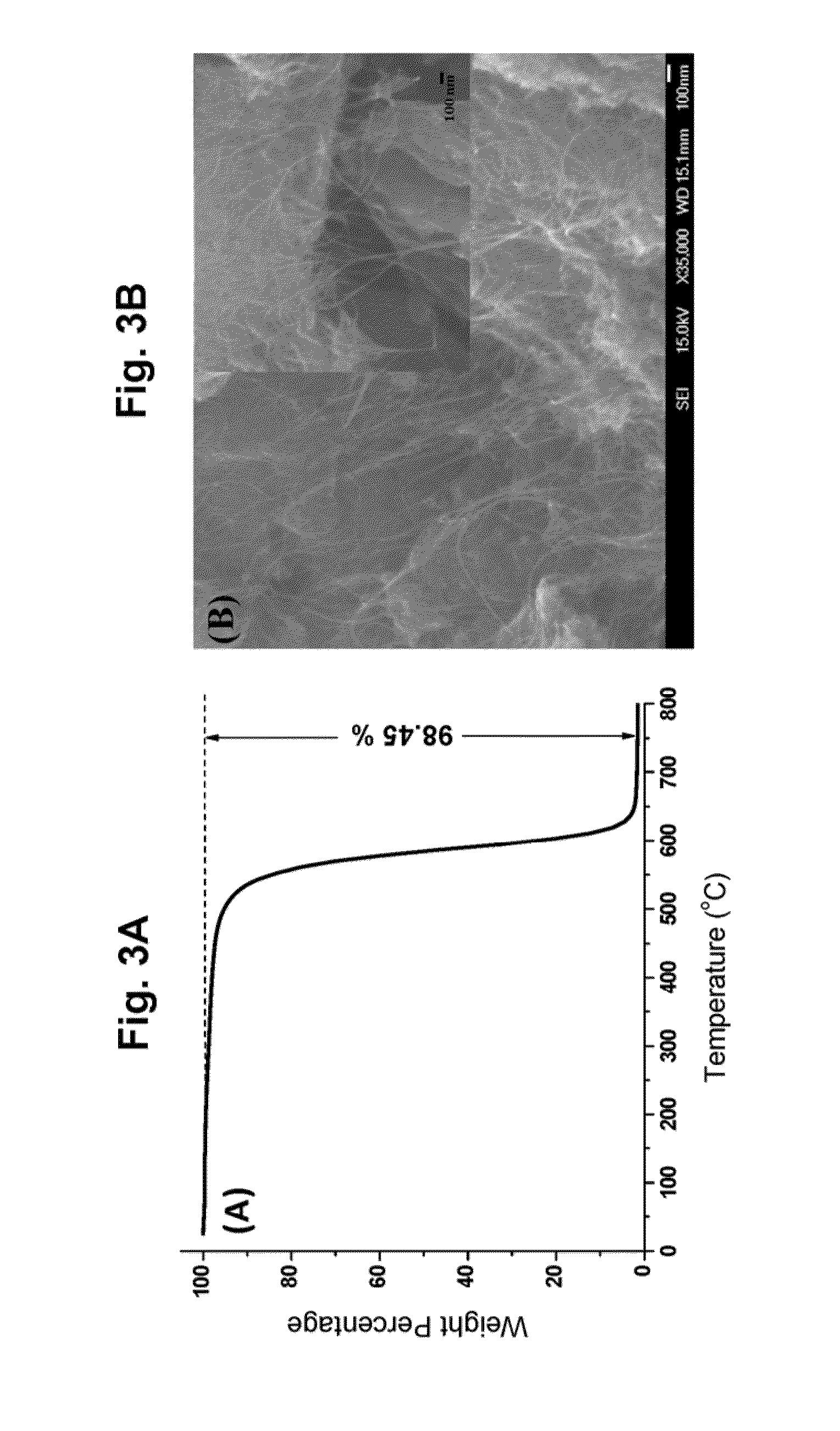Anti-cancer nanoparticle compositions and methods of use
a nanoparticle and composition technology, applied in the direction of drug compositions, peptide/protein ingredients, genetic material ingredients, etc., can solve the problems of significant morbidity and mortality, severe general toxicity to the human body,
- Summary
- Abstract
- Description
- Claims
- Application Information
AI Technical Summary
Benefits of technology
Problems solved by technology
Method used
Image
Examples
example 1
Preparation of a Composition Comprising a Nucleic Acid Encoding a UDP-Glucuronosyltransferase Attached to a Nanoparticle
[0049]Human UDP-Glucuronosyltransferases (UGTs) catalyze the glucuronidation of a variety of drugs and endogenous compounds, which serve as ligands for nuclear receptors and or signaling pathways. The most biologically significant substrates of UGTs are retinoic acid, poly unsaturated fatty acids, prostaglandins, steroids, and steroid hormones. Direct glucuronidation of those compounds control their steady state concentrations and their availability for gene regulation. In addition, environmental pollutants, endogenous steroids, and biologically active compounds synthesized in cancer cells can be substrates for UGTs. These compounds are linked to activation of nuclear receptors and signaling pathways involved in carcinogenesis and metastasis. UGTs glucuronidate these compounds, and hence are involved in the regulation of cancer cell growth. Therefore, UGTs can play...
example 2
Contacting Target Cells with a Composition Comprising a Nucleic Acid Encoding a UDP-Glucuronosyltransferase Attached to a Carbon Nanotube
Methods
[0052]The composition described in Example 1 was introduced into the panc1 pancreatic cancer cell line. Several controls were carried out in parallel to determine the proper concentrations of nanoparticles with and without plasmid, and their effect on viability of panc1 cells. Panc1 human cancer cell lines were obtained from the American Type Culture Collection.
[0053]The cells were maintained in Dulbecco's modified Eagle's medium (DMEM, GIBCO) supplemented with 10% fetal calf serum, 2% L-glutamine, 1% penicillin, and 1% streptomycin stock solutions. The medium was changed every three days and the cells were treated by trypsinization before confluence. Panc1 cells were incubated with the composition for 24 hours before performing the assays described below.
[0054]To determine the percentage of dead cells after each treatment, the cells were in...
example 3
Synthesis and Characterization of Anti-Cancer Nucleic Acid Nanodelivery System
[0058]Another gene well-recognized for its role in apoptosis and cell cycle regulation is the tumor suppressor protein, p53, which in humans is encoded by the TP53 gene. P53 plays a role in apoptosis, genetic stability, and inhibition of angiogenesis. Normal cells contain two copies of functional p53 gene, and the protein produced by this gene is activated either to coordinate the DNA repair process or induce cell suicide if DNA damage proves to be irreparable. P53 can be activated in response to numerous stressors—such as DNA damage, oxidative stress, osmotic shock, ribonucleotide depletion, or deregulated oncogene expression. When the normal protective function of p53 is lost, the cells lose their potential to control growth, which results in rapid growth and a progression toward malignancy. In many types of cancers, the loss of p53 activity may also result in resistance to radiotherapy and anticancer dr...
PUM
| Property | Measurement | Unit |
|---|---|---|
| size | aaaaa | aaaaa |
| size | aaaaa | aaaaa |
| diameter | aaaaa | aaaaa |
Abstract
Description
Claims
Application Information
 Login to View More
Login to View More - R&D
- Intellectual Property
- Life Sciences
- Materials
- Tech Scout
- Unparalleled Data Quality
- Higher Quality Content
- 60% Fewer Hallucinations
Browse by: Latest US Patents, China's latest patents, Technical Efficacy Thesaurus, Application Domain, Technology Topic, Popular Technical Reports.
© 2025 PatSnap. All rights reserved.Legal|Privacy policy|Modern Slavery Act Transparency Statement|Sitemap|About US| Contact US: help@patsnap.com



